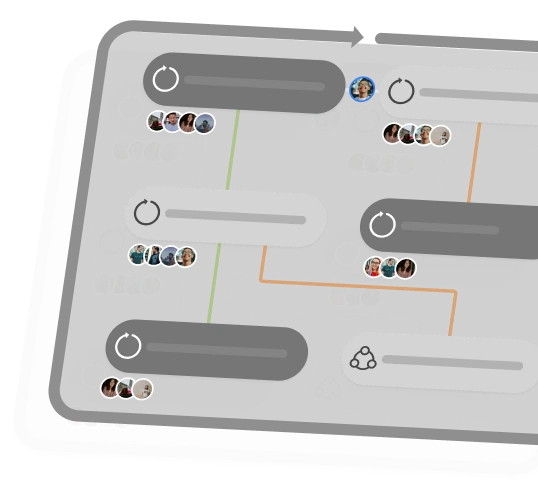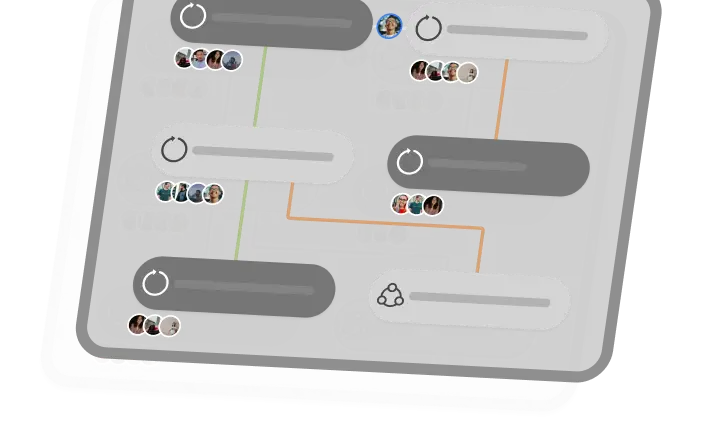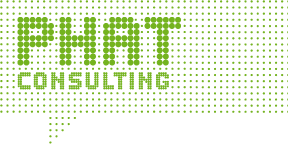Interactive Org Charts empowering you to build and visualize a people-centric organization seamlessly
Easily visualize, develop and share organizational structures with dynamic and interactive org charts.
Request a free access to experience self-organization by navigating through any org structure.
Easily Visualize and customize your org structure with our lean interactive org chart tool
Elevate collaboration and transparency with our interactive drag-and-drop Org Chart Tool.
Effortlessly navigate, visualize data, and interact seamlessly with teams.
Simplify task accountability and boost self-organization with an intuitive search in your Team Topology
Effortlessly identify stakeholders, navigate team structures and quickly find skill and task owners.
Our intuitive search function simplifies the process, ensuring efficient task assignment and boosting overall organizational effectiveness.
Boost collaboration, drive innovation and cut management costs with dynamic KPIs on the Org Chart
Discover a new era in strategic management with agyleOS’ Interactive Org Chart, visualizing essential KPIs.
Develop precise management strategies, seamlessly form teams, and identify challenges within existing teams.
Efficiently manage team structures, gaining instant insights into KPI-driven role distribution.
This streamlined approach accelerates collaboration, innovation, and reduces management costs, empowering informed decision-making for organizational success.
Efficiently navigate your organization through past, present and future realms
Unlock strategic insights at every organizational phase with our comprehensive org chart design tool.
Analyze past successes, identify coaching opportunities in the present, and craft innovative strategies for the future using flexible org chart capabilities.
Build and visualize a skills-based organization with a collaborative culture
Who benefits from a good org chart?
People & Culture
Fuel vibrant connections and foster a deep understanding of the organization, paving the way for sustainable and effective organizational development.
People Experience
Elevate employee satisfaction by providing dynamic opportunities for learning and cultivating a culture of collaboration, where natural interactions flourish.
Recruiting
Empower recruiting teams with a crystal-clear view of skills gaps and strengths, enabling data-driven decisions for streamlined internal promotions and external hiring.
Sales & Marketing
Accelerate opportunities by connecting swiftly with the right individuals in the organization. Seamlessly navigate the sales and marketing processes by bridging gaps and closing deals faster.
Product & Engineering
Catapult your team into high gear with an enhanced skills overview, facilitating rapid team staffing and task allocation, thereby boosting organizational agility and driving innovation.
Management
Equip leadership with a comprehensive overview of the entire organization, allowing strategic development with a bird's-eye view of the people-centric org structure. Transform the way you lead with clarity and precision.
How agyleOS Org Chart Helps Your Organization
Navigating Clarity and Transparency
Delve into the transformative impact of agyleOS’ Org Chart on workplace dynamics.
Learn how the platform enhances clarity and transparency, creating a workplace environment where organizational structure and company culture seamlessly intertwine for a more engaging and thriving work atmosphere.
People and Teams at the Forefront
Experience a paradigm shift from traditional org charts to people-centric organizational structures as agyleOS puts the spotlight on individuals and teams.
Discover how the platform offers a dynamic perspective, emphasizing the intricate connections and collaborations that drive value within the organization.
Revolutionizing Organizational Dynamics
Explore the cutting-edge features of agyleOS’ interactive Org Chart that redefines how organizations view and manage their structures.
Dive into interactivity, customization, and seamless adaptability, offering a dynamic solution for companies in constant evolution and any target operating model.
Innovate, Learn and Grow
Follow the journey of organizational growth with our interactive Org Chart.
Uncover how the platform not only provides insights but also facilitates continuous learning and adaptation.
Track the evolution of your organization, explore previous versions, and derive actionable insights for ongoing innovation and development.


What does agyleOS do as an interactive org chart tool?
A visual representation of an organization's structure with user interaction is an interactive org chart.
It is an interactive and engaging way to display the structure of an organization.
Users can reveal more information about people or departments by clicking on different parts of the interactive org chart.
This may involve contact details, skills, job titles, and other pertinent information.
While numerous online tools offer the creation of interactive org charts, none surpass the interactivity of agyleOS.
Elevate your organizational strategy with agyleOS, boasting features such as efficient navigation through past, present, and future realms, comprehensive design capabilities, and insightful KPI visualization, setting it apart as a leading solution in the field. agyleOS will automatically generate a chart for you based on feedback from team members.
You can also customize the chart with different colors, shapes, and images.
With agyleOS, you can create and customize org charts using stunning templates, icons, fonts, and colors.
You have the option to make your org charts interactive and share them online or download them as images.
Why should modern companies use interactive org charts?
The popularity of interactive org chart tools in modern companies is rising as they help reveal insights and leverage the potential of their employees.
Interactive org charts improve communication by providing quick and easy access to information about colleagues and company structure.
This can help to improve communication and collaboration between teams.
Innovative org charts can increase transparency by making the company's structure more visible. Building trust between employees and management becomes easier.
An Org chart software enhances decision-making by providing managers a clear view of the company structure and employee’s roles and skills.
Modern org charts can boost employee engagement by clarifying company structure and individual roles. This can enhance job satisfaction and lower turnover rates.
Org chart tools make onboarding efficient by helping new employees understand the company's structure, identify relevant internal stakeholders and their individual roles.
This can cut down on the time and resources needed for onboarding.
What is the best org chart design tool?
While several platforms claim to offer interactive org charts, agyleOS distinguishes itself by seamlessly integrating a suite of features that go beyond the norm.
Similar to other tools, agyleOS provides a skill management, employee surveys, a skill feedback system, kudo walls and more.
However, what sets agyleOS apart is its holistic approach, aiming to construct and visualize a skill-focused organization with a collaborative culture.
For those seeking transparency in managing roles, departments, and teams, agyleOS offers a comprehensive solution.
If you're looking for a platform to empower companies for true self-organization and organizational agility, agyleOS represents an excellent and versatile option.
How to map and visualize your organizational structure?
Visualize your organizational structure with an interactive org chart.
This chart reveals the internal makeup of a company, including reporting lines.
You can create it through traditional means or opt for professional org chart software like agyleOS.
- Modular platform
- Implementation & Onboarding
- Automated Data Sync & SSO
- Expert customer assistance
- Modular platform
- Implementation & Onboarding
- Automated Data Sync & SSO
- Expert customer assistance
- Product
- Resources
- Compare
- Company











